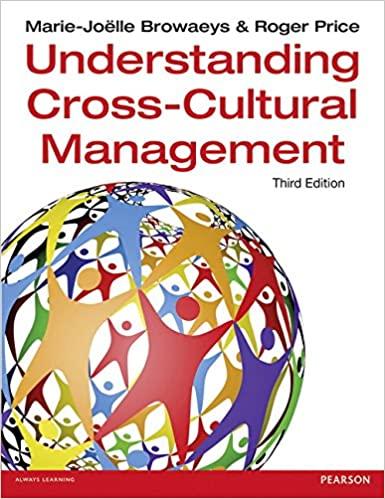Question
Read the following article to help you complete the task. Answer: Which market structure does the software industry fit? Why? Create slide show showing
Read the following article to help you complete the task.
- Answer: Which market structure does the software industry fit? Why?
- Create slide show showing a graph or illustration for each of the four characteristics. Include a two to three sentence explanation of the characteristic that fits your illustration/graph.
- Number of Producers
- Similarity of Products
- Ease of Entry
- Price Setting Power
Article - Soft Drink Industry Number of Producers
The carbonated soft drinks sector is dominated by three major players: Coke is the dominant company of the soft drink industry and boasts a global market share of around 44%, followed by PepsiCo at about 31%, and Cadbury Schweppes at 14.7%. Separately from these major players, smaller companies such as Cott Corporation and Royal Crown form the remaining market share.
Coke and Pepsi are the main pieces of this market. They struggle for over a century to conquer the number one position in the market, competing fiercely in the last few years, following each one's strategic decisions.
The soft drink market in America is a massive business with annual sales of $58 billion. With its patented Coca-Cola drink, Coke enjoys the dominant role in the soft drink market, and runner-up Pepsi is always challenging Coke for the top spot.
In recent years, American consumers' preferences for soft drinks have changed from carbonated to non-carbonated soft drinks such as fruit juices or teas. This shift in taste gave Pepsi an excellent chance to challenge Coke. Pepsi purchased food giant Quaker Oats for $13 billion. Quaker Oats produces, in addition to Quaker oatmeal, a trendy non-carbonated soft drink called Gatorade with an annual sales of $2 billion. Pepsi also purchased a popular tonic called SoBe for $370 million. Pepscan now challenges Cokest in the non-carbonated soft drink market with these additions to its popular Tropicana orange juice. Coke belatedly rose to Pepsi's challenge, experimenting with 100 different non-carbonated soft drinks.
Barriers to entry
Coke and Pepsi use barriers to entry to dominate department store space and nearly close out competitors such as Royal Crown.
Currently, the biggest threat of entry faced by the majors is from private label manufacturers such as Cott Corporation. Private labels now hold an 8.1% share in the CSD market, the majority of which is held by Cott. The challenge to both Coke and Pepsi is to further build brand loyalty in their core cola products so that consumers will not be swayed by the cheaper, private-label imitations products. For a new entrant to compete effectively, they would have to be willing to expend the time and resources necessary to first convince the consumer to try the new product, and after trial, switch their loyalties.
More importantly, retailers, finding far more attractive margins with private labels, may choose to push these products instead of the majors. Given that access to distribution channels is currently one of the largest barriers to entry, Coke and Pepsi must maintain favorable relations with the large retailers so that this barrier remains strong.
It would be nearly impossible for a new company to enter the industry. New companies would need to overcome the tremendous marketing muscle and market presence of Coke, Pepsi, and a few others, who had established brand names that were as much as a century old.
Similarity of Products
The end product is, despite extensive advertising campaigns that promote the contrary, almost identical for both companies. The product differentiation comes from established marketing campaigns that have created brand identification and loyalties.
Coca-Cola is the original cola; while there isn't a huge difference in taste, Pepsi mirrored their cola after Coke's, being just different enough in taste not to be the same drink.
Price Setting Power
There is intense rivalry between Pepsi and Coke. This rivalry leads to downward pressure on prices and significant investments in advertising to build and maintain brand loyalty. A 2000 article from the Competitive Media Reporting group reported that soft drink advertising expenditures in 1999 were $649.8 million.4 In a maturing market such as domestic carbonated sodas, the only way to gain market share is to steal from one's rivals. Thus, Pepsi and Coke fight heatedly over prices, suppliers, spokespeople, retail space, and most importantly, consumers' taste buds.
Coke and Pepsi have limited price setting power because of competition with other companies. If Pepsi were to charge 2 dollars for a bottle and Coke charged $1.50, many people would switch to Coke because they are similar products.
Step by Step Solution
3.40 Rating (162 Votes )
There are 3 Steps involved in it
Step: 1
The software industry fits into an oligopoly market structure based on the characteristics described ...
Get Instant Access to Expert-Tailored Solutions
See step-by-step solutions with expert insights and AI powered tools for academic success
Step: 2

Step: 3

Ace Your Homework with AI
Get the answers you need in no time with our AI-driven, step-by-step assistance
Get Started


